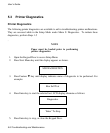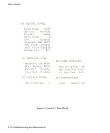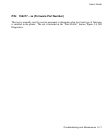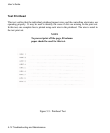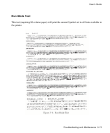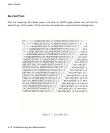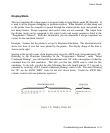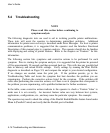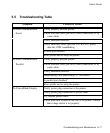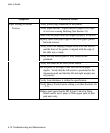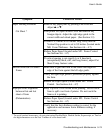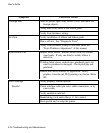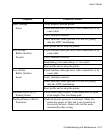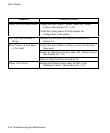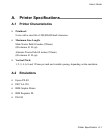
User’s Guide
5-16 Troubleshooting and Maintenance
5.4 Troubleshooting
The following diagnostic tests are used to aid in isolating possible printer malfunctions.
These tests will assist the operator in determining printer/host problems. Additional
information for printer error recovery is described under Error Messages. For host to printer
communication problems, it is suggested that the operator read the Interface Functional
Description of this manual prior to symptom analysis. The operator should also be familiar
with displaying and setting of printer features. Refer to the chapters on “Features” for this
information.
The following section lists symptoms and corrective actions to be performed for each
symptom. Prior to starting the symptom analysis, it is suggested that the printer be powered
off for approximately 30 seconds and then powered back on. This will clear any possible bad
data in memory and reload Profile settings. Verify settings by running the Print Profile
diagnostic as described on Pages 5-9, and compare the output to your desired configuration.
If no changes are needed, rerun the print job. If the problem persists, go to the
Troubleshooting Table and locate the symptom that best describes the problem you are
experiencing. Perform the corrective actions listed for the symptom. If the problem still
exists after performing the corrective actions, or if there is not a symptom that corresponds to
the problem you are experiencing, call a qualified technician for further assistance.
In the table, some corrective actions indicate to the operator to check a ‘Feature Value’ to
make sure it is set correctly. An incorrect feature value can vary between host systems,
applications, configurations, etc., and may cause the particular symptom. For example:
The operator may need to check the setting of the Parallel Enable/Disable feature found under
Menu 6 (Parallel Control) and verify that the Parallel port is Enabled.
NOTE
Please read this section before continuing to
symptom analysis.



